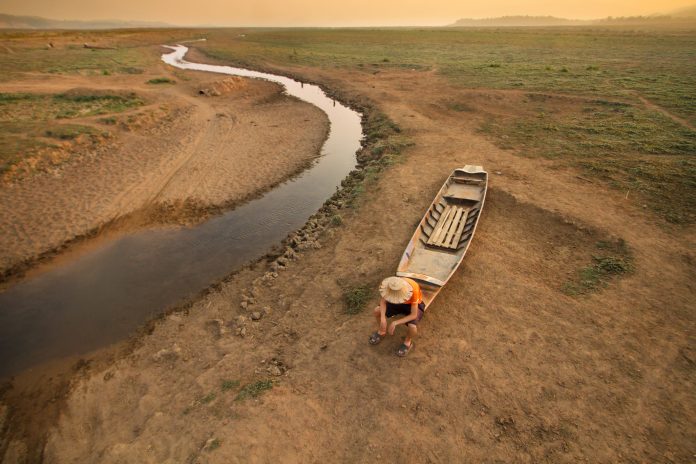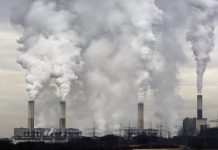A COP26 report by NTU Singapore and University of Glasgow outlines the economic threat of climate hazards at ASEAN, highlighting the impact of weather extremes in the region
Their report emphasises that ASEAN is at risk of losing over 35% of its GDP by 2050 from climate change and natural hazards, severely impacting key sectors such as agriculture, tourism, and fishing, along with human health and labour productivity.
The region, consisting of 10 member states across Southeast Asia, has a combined population of 600 million people. The population is at risk of hotter weather, longer monsoon seasons, and increased droughts, as global temperatures are predicted to increase by 1.5° C above pre-industrial levels over the next 20 years. Rising sea levels will additionally impact ASEAN due to the number of people living in low-lying coastal areas.
What are the report findings?
Their report titled ‘Adaptation and Resilience in ASEAN: Managing Disaster Risks from Natural Hazards’ was published ahead of COP26. It calls for major policy implementation by governments, increasing resilience against natural hazards and focusing on preparedness against climate change.
A primary point of the report argues that policies for reducing disaster risk should focus on the vulnerabilities of infrastructure, ecosystems, and social groups across ASEAN.
The Global Climate Risk Index, which calculates impacts of extreme weather events, found that changes in rainfall patterns and temperature will cause major consequences for ASEAN’s ecosystems and agricultural activities.
The index ranked Myanmar 2nd, the Philippines 4th, and Thailand 9th as the top three ASEAN countries at risk from 2000 to 2019. Meanwhile, Brunei Darussalam 176th, and Singapore 179th, were ranked the least at-risk.
Professor Fabrice Renaud, from the School of Interdisciplinary Studies of the University of Glasgow, who co-led the project said: “ASEAN nations are unevenly at-risk to natural hazards and climate change because of different hazard characteristics and patterns of exposure and vulnerability.
“It is imperative to characterise risks from multiple-hazards at the sub-national scale to provide locally relevant adaptation measures, reduce risks sustainably, and avoid maladaptation”.
While highlighting the worsening conditions people in poverty will experience, the report notes that without climate change prevention, ASEAN could undo efforts over the past 30 years to reduce poverty, advance human development across the region, and ensure food security.
ASEAN could undo efforts over the past 30 years to reduce poverty
The increase of extreme weather events could mean up to 96% of the region are likely to be affected by drought, and a further 64% affected by extreme drought, according to a recent United Nations Economic and Social Commission for Asia and the Pacific (UNESCAP) report.
Other weather extremes, such as typhoons, impact the agricultural sector by damaging physical assets and agricultural economic flow. An example of this impact can be seen with Typhoon Haiyan in the Philippines, which submerged crops for around 16 hours and devastated approximately 600,000 hectares of farmland, resulting in 1.1 million tons in crop losses, adversely food supply chains in the region and claiming over 6,000 lives.
‘Productivity of the agricultural sector depends on a predictable climate’
The report also highlights that flooding is another major hazard in the region, suggesting strategies to reduce flood risk should include a landscape approach where decisions are collaboratively made between ASEAN members.
What are the advised resiliency methods of the report?
- Priority should be given to understanding the root causes of disaster risk
- Disaster risk reduction in ASEAN needs to focus on the circumstances, needs and priorities of people who are financially disadvantaged and marginalised
- Support for institutional mechanisms to assess and respond to greater uncertainty and changing patterns of disaster risk is needed
- All disaster risk reduction measures should be considered systematically and on an equal footing to ensure that the best set of measures to reduce risks for the long-term is selected
- Transparency, accountability, and enforcement of financial standards and regulations are needed to better distribute funding between disaster response, recovery and preparedness and resilience-building efforts.
These nature-based solutions, such as reconstructed and protected mangroves or coral reefs, protect, sustainably manage, and restore natural or modified ecosystems. This can be seen with Vietnam’s mangroves, which continually act as a natural barrier against storms, sea level rise and erosion. This natural barrier also stores and sequesters carbon.
The report notes that much progress has been done to prepare for instances of weather extremes, such as local climate projections. However, limited reporting of this progress will prevent thorough assessments of disaster preparedness, making these climate conditions less predictable for ASEAN.
Dr Lauriane Chardot, Research Fellow from NTU’s EOS, a lead author of the study, said: “Through conducting a comprehensive review of disaster risk in the region, our interdisciplinary team from multiple institutions in the UK and ASEAN highlighted successful and inspirational case studies to be considered by policymakers at COP26.
“We called to attention the importance of adapting to climate change to reduce disaster risk and increasing resilience at the sub-national, national and regional levels.”
Professor Benjamin Horton, Director of NTU’s Earth Observatory of Singapore (EOS), who led the project, said: “Our report describes how ASEAN societies and economies will be increasingly exposed to the climate emergency from sea-level rise, dramatic increases in heat and humidity, extreme precipitation, landslides and drought.
“This threatens the advances in human development and poverty reduction that ASEAN has made over recent decades. Therefore, disaster risk reduction in ASEAN requires a suite of policies, including livelihood support, effective emergency relief and social protection.”











